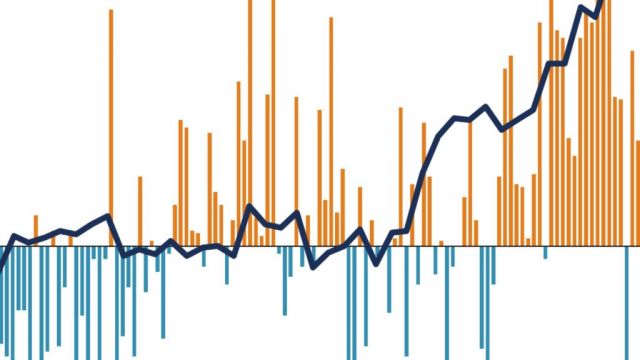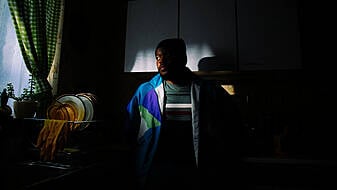After two years dominated by the coronavirus pandemic, 2022 marked a shift as other global and economic challenges emerged.
War in Europe, inflation and the climate emergency all impacted Ireland during the year, along with local issues such as the housing crisis and hospital overcrowding.
Here are some of the biggest stories of the past year – along with the charts that help tell them.
War in Ukraine
Russia’s invasion of Ukraine in late February brought the largest land war to Europe since the end of the second World War.
The impact was felt throughout the continent as millions of Ukrainians sought refuge in other countries. More than 67,000 Ukrainians are now living in Ireland.
This figure is lower than the number that have arrived in countries closer to Ukraine both in absolute terms and relative to the size of Ireland’s population.
Poland and the Czech Republic have registered more than 1.4 million and 400,000 Ukrainian refugees respectively, about 3.7 per cent of their populations, compared to Ireland’s roughly 1.2 per cent.
Nonetheless, the levels are unprecedented for Ireland, and combined with rising numbers of asylum seekers from elsewhere have outpaced the capacity of accommodation centres.
Cost of living crisis
Price rises were another major impact of the conflict. Serious inflation came back to the global economy for the first time in decades as Russia's war in Ukraine drove up energy prices and cut off supply chains.
In Ireland inflation rose to a level not seen since the 1980s, hitting 9.2 per cent in October before falling back to 8.9 per cent in November.
The European Central Bank rose interest rates in response, making mortgages and loans more expensive for Irish households and businesses. The rate rises are likely to continue well into 2023.
For most people the rising cost of living was most obvious during a supermarket shop, with many staple foods seeing a sharp increase in cost.
Milk prices have jumped almost 33 per cent in the past year, while there has been a 25 per cent rise in the cost of sugar and a 20.8 per cent hike in the price of eggs.
Health
Society returned to a form of normality in 2022 after Covid restrictions were removed in the early part of the year.
However, the impact of the pandemic is still being felt in businesses and public services, with backlogs and staff shortages now common across sectors.
This is most obvious in healthcare, where demand has increased amid a surge in respiratory viruses.
Though the numbers on outpatient waiting lists have dropped slightly in recent months, overcrowding in hospitals is at record-high levels.
According to the Irish Nurses and Midwives Organisation, 2022 was the worst year on record for patients, with the main hospitals in Cork, Limerick and Galway the most overcrowded.
Housing
Ireland's housing crisis continued to dominate politics in 2022 as the Government moved forward with its flagship plan to deliver more homes.
Some of the headline figures are encouraging for the Government – planning permissions are up and it is expected to beat its overall target for 24,600 house completions in 2022.
However, despite some encouraging statistics, Irish people still cite housing as a major concern. Eurobarometer data in 2022 showed 48 per cent of Irish people put housing as one of the two most important issues facing the country, compared with just 6 per cent of people in the wider European Union.
Meanwhile the Residential Tenancies Board says the average new rent in the country is now almost €1,500 a month, while the latest figures show emergency homelessness at a record level of 11,397.
Climate
Ireland recorded its warmest year on record in 2022 as extreme weather events linked to climate change affected millions of people across the globe.
According to Met Éireann, the provisional average temperature of just above 10.8 degrees places 2022 ahead of the previous warmest years – 1945 and 2007.
Ireland recorded above-normal temperatures in 2022 for the 12th consecutive year, with 21 of the 22 years this century all above normal.
The all-time highest temperature records for July and August were also broken, with 33 degrees Celsius recorded at the Phoenix Park in Dublin on July 18th, and 32.1 degrees in Durrow, Co Laois on August 13th.
Along with Phoenix Park on July 18th, eight other weather stations in the State reported their highest daily maximum temperature for any month on record.
For more charts and analysis, head to the breakingnews.ie data tracker







